

Prey is one of those games which no matter how much people go on about, you really do think is all hype. Apparently the game was originally conceived in 1995 but is only being released this year due to a range of dramas which have punctuated this game's long development history. I must have missed out on all the early hype because this game definitely did not register on my radar. At best even Prey fans were starting to think the game was another Duke Nukem Forever.
And then I finally saw the demo was released, and lots of people were raving about it. Based on the Doom 3 engine, initial screenshots of the game made it look pretty much like Doom 3 but with a Native American central character instead of a futuristic marine. Once again I was quietly underwhelmed by the game. However I am not one to poo-poo a game without actually trying it, especially when a free demo is available, so I downloaded the game and set about trying to see what the fuss was about.
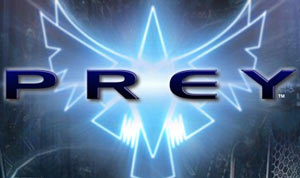
The first thing that strikes you about this game is that the Doom 3 engine is not the star of the show. It's not graphics which drives this First Person Shooter, it is - surprisingly enough - gameplay and innovation. Sure, the game has great graphics and very immersive environments, but the truth is they would account for nothing in today's overcrowded marketplace of FPS's if this game didn't have a special something. It really does capture the juxtaposition of an ancient culture with a biomechanical alien invasion in a way you'd never think was possible. And the innovative features although nothing mind blowing are numerous enough to make the game highly playable and very interesting. So after all those words, I guess what I'm trying to say is that this is not just another Doom 3 clone dressed up as a new-age game. If you don't believe me, download the Prey Demo and give it a try for yourself, I promise you that you'll find it to be not what you expected.
Although Prey is firmly based around a modified Doom 3 engine, and as such much of my current Doom 3 Tweak Guide applies to the game, the in-game settings are sufficiently numerous and different to warrant clear explanation and screenshot comparisons, and I've also taken the time to go through the various major console commands and weed out any ones which don't work for Prey, along with adding a few new commands which Prey brings to the Doom 3 engine. Give the guide a read through to make sure you get the most out of this innovative and refreshing game.

Note: This guide refers to the latest version of Prey, Version 1.4. Make sure to check back regularly for updates.
Before getting into any game-specific settings and tweaks, this section covers the obligatory system optimization information I include in all my guides. If you've followed this advice recently, you can skip this section.
Many people report problems with this game and in almost all cases these are due to general system issues and not the game itself. With that in mind I strongly urge you to take some time and follow the advice below if you truly want this game, and indeed every other game you own, to run at its fastest and most trouble-free.
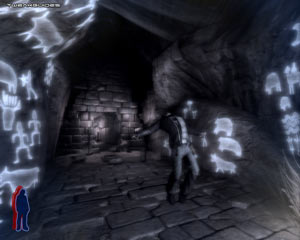
The place to start is my free TweakGuides Tweaking Companion. It is the complete system optimization guide for Windows users. Designed for novice and advanced users alike, it is written in plain English to help you genuinely understand all aspects of Windows and your PC. The guide covers every major topic, from the correct installation of Windows and critical drivers and software, through to recommendations for every significant setting and feature, all the major performance and convenience tweaks and customizations, as well as detailed troubleshooting advice. There are also links to a range of reliable free applications for optimizing and maintaining your system, as well as to important resources for finding out even more about Windows and your PC. There are two separate versions: one for Vista and one for XP.
If you've ever wondered what common graphics and display settings like FPS, VSync, Refresh Rate, Antialiasing and Anisotropic Filtering are, and how they really work, then check out my Gamer's Graphics & Display Settings Guide for all the details in an easy to understand format. The guide also gives you a rundown on exactly how a game goes from a being a set of files on your hard drive to a 3D image on your screen, including relevant performance tips.
Finally, if you run an ATI or Nvidia graphics card, I have written two comprehensive guides which you should check out: the ATI Catalyst Tweak Guide and the Nvidia Forceware Tweak Guide. These guides cover absolutely everything about the latest graphics drivers, how to set them up correctly, as well as advanced tweaking, overclocking and benchmarking tips. They're a must-read for configuring your graphics card correctly.
The above information really will serve you well in the long run, not just in this game. If you don't optimize your system and keep everything updated and maintained correctly you will keep running into "mysterious" problems time and time again. Do yourself a favor and when you get a chance spend an afternoon or two optimizing your machine the right way with the guides above.
The next section goes into more detail about specific troubleshooting tips which address common performance issues with the game.

This section contains specific troubleshooting tips which address many of the common problems experienced by Prey players. I can't stress enough the importance of taking the time to go through the checklist of advice below if you're having a problem with the game.
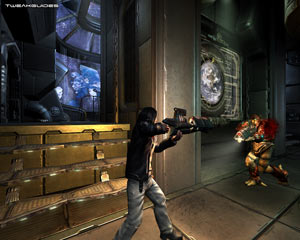
Official Support: The first place to look for official support details is at the Offical Prey Support Site. Importantly, check out the minimum system requirements shown there, as well as the supported hardware list, since if any of your hardware is not supported or doesn't meet the requirements then you will experience problems with the game, or quite simply won't be able to run it. If you're having specific problems you should visit the Official Prey Forums to look for solutions or post a question, especially this Prey Tech Help FAQ.
Windows Vista Users: If you're having problems running this game under Windows Vista, first make sure that you're using the latest Vista graphics and audio drivers for your hardware, and the latest version of this game (see page 4 for patch details). Next, make sure you don't change your UAC settings after the game has been installed, as due to Virtualization this can change the location of the game files and settings. If you can't launch the game successfully when UAC is enabled, you will need to run the game with full Admin privileges. To do this either right-click on the launch icon and select 'Run as Administrator', or right-click on the launch icon, select Properties and under the Compatibility tab tick 'Run this program as an administrator' then click OK. I strongly recommend that you refer to the TweakGuides Tweaking Companion for Windows Vista for more information - in particular check the 'Gaming in Vista' section of the Graphics & Interface chapter; the UAC section of the PC Security chapter; and the 'Personal Folders' and 'Directory Junctions & Symbolic Links' sections of the Windows Explorer chapter. These will tell you how you can fix game-related issues and also explain the relevant differences of Vista.
SecuROM Issues: The secuROM copy protection system is a method used while creating the game CD/DVD to embed a form of security encryption onto the disc. This is done not so much to prevent copying/cracking by hardcore pirating groups - they defeat it just fine. It's more to prevent casual copying, like making a burnt copy for your friend. Unfortunately secuROM also causes a wide range of annoying problems, from problems authenticating the disc through to irregular crashes and lock-ups. The first thing you should do is disable or even uninstall all disc emulation/image mounting software - these typically conflict with secuROM. Also check these tips to see if they help. If these don't help, contact SecuROM Support to get help with your problem. The bottom line is that you may not overcome your problems with secuROM; it is a terrible copy protection method which punishes legitimate buyers of games.
Lag vs. Graphical Slowdowns: This is a common issue in most multiplayer FPSes. Check the Multiplayer Commands on page 10 of this guide for methods of troubleshooting ping problems, however also make sure to adjust your settings to get a consistently smooth average FPS (25FPS or higher is recommended), otherwise when your FPS dips down to the low double or single digits you will experience lag which you may mistake for connection or server problems when online. Display your FPS counter in the top right corner of the game while playing online, and if it shows a good framerate but you still experience laggy gameplay, then you can really start experimenting with the various net_ command variables. Make sure to also install the latest patch (see page 4) as this helps improve multiplayer performance.
The Latest Graphic Drivers: Since Prey is so dependent on your graphics card, make absolutely certain you have updated to the latest graphics card drivers. This means the ATI Catalyst 6.8 or newer; or the Nvidia Forceware 91.31 or newer. See page 4 of my ATI Catalyst Tweak Guide or Nvidia Forceware Tweak Guide for details on where to download the latest drivers and how to install them cleanly. For Nvidia SLI users, see the last page of this guide for more details.
Sound Problems: Make sure you have your speaker mode correctly set up in the Windows Control Panel before launching the game, and then see page 7 of the guide for more details. If you want to troubleshoot to see whether crashing or problems in Prey are the result of your sound card, sound drivers or sound settings, use the s_noSound command (See Advanced Tweaking section). Importantly, X-Fi owners should upgrade to the latest official X-Fi drivers on the Creative SoundBlaster Site as these have a specific fix for Prey.
In-Game Lag/Freezes/Stuttering: To reduce any stuttering/loading pauses in Prey, make sure you have set the appropriate Texture Quality level based on the information on page 5 of this guide. Because that setting controls textures, and because texture loading is the most common cause of regular stuttering in most games, you need to experiment to have the right balance of image quality and performance. Don't just choose High if your system can't handle it. And of course, make absolutely sure that you have run the Windows Defragmenter after installing Prey - if its files are fragmented this can greatly increase your stuttering and in-game loading pauses.
Antialiasing and Anisotropic Filtering: To make sure Antialiasing and Anisotropic Filtering work properly in Prey it is recommended that you first go to your graphics card's control panel, and for Nvidia cards under the Performance & Quality Settings in the Global Driver Settings section select 'Application Controlled' for Antialiasing and Anisotropic Filtering. For ATI cards go to the 3D section of the Control Panel/Control Center and select 'Application Preference' for Antialiasing and Anisotropic Filtering. Now go into Prey and set the level of Antialiasing and Anisotropic Filtering under the Options>Advanced 1 and Advanced 2 screensSettings>Advanced Options area (See In-Game Settings section). If you are unfamiliar with what Antialiasing or Anisotropic Filtering do, see my Gamer's Graphics & Display Settings Guide.
Virus Scan: Do a full scan of all your files using the following excellent (and free) tools: AVG Virus Cleaner for viruses, A-Squared for trojans, and Ad-Aware SE for spyware/adware. Viruses, trojans and spyware can cause unexplained behavior, general file corruption and system slowdown, and can also steal your CD Key. It's best to make sure your system isn't infected before moving on to any other optimization measures. However make sure to disable any background scanning programs once you're done (See below).
Background Programs: The game's developers recommend that you disable all background applications - especially virus, trojan and spyware scanners and messaging utilities. These applications can and do use up valuable CPU resources, take up precious RAM, cause memory conflicts and crashes to desktop, but most importantly they interfere with read/writes to your hard drive effectively slowing it down and causing even more in-game freezes and stuttering. Full instructions on how to identify your startup programs and services and how to correctly disable unnecessary ones are in my TweakGuides Tweaking Companion. This is an important step you should not miss.
Overclocking: While Prey is not overly sensitive to overclocking, if you are experiencing graphical glitches or crashing in the game, set everything back to its default speeds and see if this impacts on the problem. If you don't experience the same problems at default speed, or they're reduced in severity, then your overclock is the primary culprit. Either permanently reduce your overclock and/or increase cooling to regain stability. Don't assume that because other games run with stability at a particular speed that Prey will do the same.
These are just a few of the common problems people are having with Prey. However if you follow the advice in this guide, you should be able to play the game more smoothly. Just be realistic about balancing eye candy with performance, and focus on tightening up your system as much as possible. Read the guides I link to under Essential Optimization above for more details on how to do that. The Doom 3 engine on which Prey is based is quite solid and is virtually bug-free, so chances are the problem is with something on your end.
Read the remainder of this guide for specific settings and tweaks which can help improve your performance and resolve any problems. The next section looks at patches, maps and mods.

Official Patch
The latest patch for Prey has been released, bringing it up to Version 1.4. The patch weighs in at 42MB, and aside from containing all the changes from previous patches, the new patch actually contains no new fixes or content - it simply contains some compatibility files for the Japanese verison of Prey, and more importantly, it removes the disk check component of the game's copy protection.
The quickest way to check for any new patches at any time is to launch the game while online and then click the Updates link at the bottom of the main menu. I will provide details of any new patches here as soon as they are released, so check back on this guide regularly.
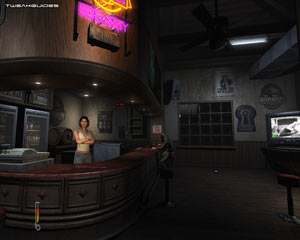
No-CD Patch
Prey uses the SecuROM copy protection system and involves both a CD check and a CD Key method which is authorized online when playing the game. SecuROM is known to cause problems on some systems, and solutions are offered in the Troubleshooting Tips section. As always I cannot provide any information on how to override these protection methods due to the legality of doing so, but hopefully 3DRealms will provide a No-CD/DVD for the game as part of a future patch, as this method only punishes legitimate buyers of the game.
Update: As of the 1.4 Patch, you no longer have to keep your game CD/DVD in the drive to play Prey, as the disk check component of the copy protection has been removed.
Maps and Mods
The Doom 3 engine on which Prey is based is highly customizable and there are already a great many modding experts who have cut their teeth producing mods for Doom 3 and Quake 4 which both use the same engine. Expect to see some nice Prey mods in the near future, which I will of course report on here. Make sure you're patched to the latest version if you want all mods to run correctly on your install of Prey.
The next section of the guide covers In-Game Settings for Prey.

This section contains full descriptions and recommendations for Prey's in-game settings. You can use these to get a good balance between image quality and performance, however I can't give you specific instructions on what to turn on and what to turn off. It all depends on your particular hardware combination, and more importantly your personal taste for the trade-off between performance and image quality. Many of these settings are heavily dependent on your particular graphics card, and older graphics cards will show markedly different performance impacts than more recent cards for example. You can check out the Prey Performance Analysis articles here and here for more details.
To access Prey's in-game settings, start the game and under the Main Menu click the Options item, and from there you will see a large range of settings which are explained in detail below:
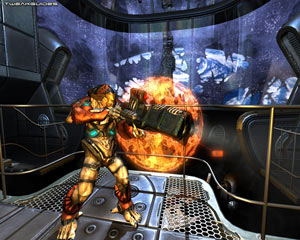
Controls
This section has several separate categories (tabs on the left side) for player control options you can change: Movement, Combat, Weapons, Look, and System. The procedure to change any of the control bindings is simple: left-click on the key/button currently assigned to an action under the Key Assignment column, then press the relevant mouse button or key you wish to assign to that control setting. Go through all these sections and set the controls according to your taste, none of them have any performance impacts.
Note however that mouse-related controls like Mouse Smoothness, Mouse Sensitivity and Invert Mouse can be found under the Game Options>Feel tab (See below). Also see the Advanced Tweaking section for more details of how to use the bind command to create your own custom control bindings.
Importantly, if you want to see and change your key assignments in one glance at any time during the game, press the F1 key (by default) and a graphical keyboard layout with mapped keys will be shown on screen.
Game Options
Look
Show Decals: Decals are the small marks left on surfaces when a weapon is fired or an explosion occurs for example. Setting this option to No prevents any such decals from appearing, which can improve FPS particulary during heavy combat scenes, however it obviously also reduces realism. Note that disabling decals does not disable blood spurts; to do that you need to use the g_bloodEffects command (See the Advanced Tweaking section).
Show HUD: If set to No, disables your Heads Up Display (HUD) - the graphical user interface which shows you various bits of information such as your health status (the image of the man in the left bottom corner) and what weapon/item you've equipped. Furthermore, disabling the HUD also disables your weapon crosshair, even in zoom mode, so it is definitely not recommended. At best disabling the HUD is useful for taking screenshots, as any FPS difference is minimal on most systems, so again it is strongly recommended you leave this set to Yes.
Show Weapon: If set to No, this option removes your weapon from the first person screen view. It is still equipped and you can still use it as normal, but you won't see it on screen. This can help improve performance slightly since weapons models are quite complex, however obviously it can also cause confusion to yourself and reduce realism.
Subtitles: If set to Yes, displays subtitled text whenever a main character speaks (including Tommy). Unless you spefically require this functionality, it is best to leave it set to No, although the FPS impact is negligible either way.
Allow Profanity: If set to Yes, allows the characters in the game to use profanity - basically swear words. Once again this has no performance impact, so set it to suit your taste. Be warned that Prey does contain a fair bit of cursing throughout.
Crosshair: Allows you to choose the type of crosshair generally displayed in your HUD. Set to suit your taste as there is no performance impact, although note that sometimes a custom crosshair may appear depending on the object you're holding/facing.
Feel
Adaptive Difficulty: This is an interesting feature of Prey: there is no difficulty slider in the game - instead, you start off in Normal difficulty mode when selecting a New Game, which gives an average level of difficulty (only after completing the entire game can you then restart in Cherokee mode which is much harder). However if you enable Adaptive Difficulty (set to Yes), the game will constantly track your combat statistics and depending on how well you're doing, the game will alter everything from enemy behavior to the number of ammo and health pickups based on this. For this reason, I strongly recommend setting this option to Yes, as it should provide everyone with a fair challenge: if you start to struggle the game should react accordingly to make things easier for you; if you're finding things too easy it should ramp up the difficulty. Enabling Adaptive Difficulty does not appear to have any noticeable FPS impact, but it may reduce performance slightly on machines with low end CPUs.
Invert Mouse: If you are using a mouse in the game to control your player's view, setting this option to Yes means that pushing your mouse forward will make the character look down, and pulling the mouse backward will make him look up. If set to No, the results are the exact opposite. Has no impact on performance, set to your personal taste.
Mouse Smoothness: This slider controls how smooth your mouse movements will be in the game. The further to the right you move the slider, the less jerky your mouse will feel as your mouse movements are averaged out. Unfortunately for some people, increasing mouse smoothness also results in noticeable mouse lag, whereby there will be a slight delay between your mouse movements and how that's translated to what appears on your screen. I recommend you move the slider to the far left to disable mouse smoothing if you want to minimize any potential mouse lag.
Mouse Sensitivity: This slider determines how sensitive your mouse is in the game. The further to the right the slider, the more sensitive your mouse is to being moved. Adjust this setting until you can turn around rapidly, yet also make small changes in your aim without excessive jumpiness. Has no impact on performance. Note, if your mouse is lagging in the game, aside from Mouse Smoothness (see above), this is primarily due to low FPS in certain areas. You must adjust your settings to improve your average FPS (particularly in detailed scenes and during heavy combat) and you should then notice an improvement in mouse lag. Mouse lag can also result from enabling Triple Buffering in your graphics card's control panel, especially on graphics cards with less Video RAM - see the Conclusion of this guide for more details.
Free Look: When set to Yes, this allows you to use the mouse to change your character's view direction. If set to No, moving the mouse back and forward will not make your character look up or down, it will make him walk back or forward. Has no performance impact, set to your personal taste, although setting this to Yes is the normal configuration for most people.
Video
[Video]
Auto Detect Video Settings: This option will attempt to detect and automatically adust all the graphics settings to suit your system. Generally not recommended, as you can get a much better result by understanding and manually adjusting the various settings below (plus some config tweaking in the Advanced Tweaking section).
Texture Quality: This setting controls the overall image quality of the graphics in the game, in particular the way in which textures (the 2D images covering the surface of all 3D objects in the game) appear. This setting has a major impact on your performance and on visual quality, so it's very important that you choose the right one for your system based on your graphics card and your tastes. There are three levels of quality: Low, Medium, High, and each is covered below:
Low Quality: This mode is designed for a graphics card with 64MB of Video RAM. It uses compressed textures and light maps, and texture resolution is also quite low. The reason for this is that high resolution uncompressed textures quickly fill up your Video RAM and cause a lot of swapping into and out of the Video RAM, creating small pauses and freezes. Texture compression and reducing the resolution of textures and light maps keeps the Video RAM overhead low, with the down side being some "compression artifacts" (i.e. blurriness, some pixelation and most noticeably a purplish tinge to textures) and generally quite blurry, more pixellated low res textures at this setting level.
Medium Quality: This mode is designed for a graphics card with 128MB of Video RAM. There is still compression used for textures, and light and render maps. Texture sizes are not automatically reduced however, so all textures will appear at their full resolution. There will still be compression artifacts however, but once again this must be done to keep Video RAM demand low. This mode is the one recommended for many people as it is a good balance of image quality and performance.
High Quality: This mode is designed for a graphics card with 256MB of Video RAM or more. In this mode there is no texture compression (which increases Video RAM usage), however light maps are still compressed. Essentially in High Quality mode texture quality is improved over Medium Quality due to removal of compression and through use of high level Anisotropic Filtering, but at the cost of a performance hit on cards with lower Video RAM and processing power.
Ultra Quality: There is no actual 'Ultra Quality' mode in the in-game settings for Prey. To implement Ultra Quality mode you need to set Image Anisotropy to 8x or higher (See the next page), and alter several config settings (See Advanced Tweaking section), namely image_usePrecompressedTextures=0, image_useNormalCompression=0 and image_UseCompression=0. While this method doesn't work in the demo version of Prey, it does work in the full version. It reduces FPS and can increase stuttering/hitching for a minimal increase in image quality, but for recent graphics cards with 256MB or especially 512MB VRAM, the performance drop should not be significant. Of course this is only recommended if you want the absolute highest Texture Quality.
To see an animated screenshot comparison of the three Texture Quality settings, click the following link: Prey_TextureQuality.gif (1.1MB). Note the more obvious differences - pay particular attention to the metallic floor on the left, the surface detail on the creature to the left, and the ball on the right, and even the fleshy wall on the left side of the shot. Note further that no Anisotropic Filtering was used in any of the comparison screens.
Video Resolution: This setting determines the resolution of the game image. That means how many pixels are displayed on the screen. A resolution of 800x600 means 800 pixels wide by 600 pixels high on your monitor. The higher the resolution, the more pixels shown and the more detailed and clearer the game image, but it takes more graphics card power (and some CPU power) and hence you will see less frames per second. The highest resolution available in this list of resolutions is limited to what your graphics card and monitor are actually capable of rendering. The resolution has an important impact on your framerate in Prey in conjunction with the Texture Quality settings (see above). If nothing else helps you improve your FPS you will have to reduce the resolution.
Note: To set a custom screen size in Prey see the r_mode, r_customheight and r_customwidth commands in the Advanced Tweaking section, as well as the Aspect Ratio setting further below.
Update: As of the 1.1 Patch, widescreen resolutions have been added to the Video Resolution setting, so if you run a widescreen monitor make sure to install the latest patch (see page 4).
Fullscreen: If set to Yes, this means Prey will run in fullscreen mode. This is recommended, as it provides optimal trouble-free performance. However if you want to run the game in a window instead - and possibly see a performance improvement - select No. This will run the game in a window with the resolution you specify in the Video Resolution setting. Note that if the resolution is larger than your Windows Desktop resolution, parts of the game window will not be visible. Therefore if you plan on running Prey in windowed mode you should specify a resolution of equal to or less than your current Windows Desktop resolution. Note that to reduce the potential for problems in windowed mode, your Windows Desktop should be set to 32-bit color. Also note that running in windowed mode may cause additional problems and instability, due to memory management issues, so bear this in mind if you're troubleshooting an issue with Prey.
Brightness: The Brightness slider controls the brightness of the game image. The further right you move the slider, the brighter the image. Brightness values which are too high result in unrealistically brigh images (such as making nighttime into day), so don't ramp this setting up. This setting has no impact on performance.
Gamma: The Gamma slider is similar to the Brightness slider, however Gamma controls the overall brightness of the screen. Unlike brightness, altering gamma also alters the correctness of certain colors. So in the first instance adjust brightness using the Brightness slider. However if things still appear odd, use gamma for further adjustment, and once again don't increase this value dramatically as this will result in incorrect color and washed out images. Again has no impact on performance.
Aspect Ratio: This setting determines the ratio of width to height of the onscreen image. The options here are 4:3, 16:9 and 16:10. Most display devices are 4:3 aspect ratio, which is the traditional TV/monitor aspect ratio. However newer Widescreen HDTV's and some LCD monitors have a 16:9 (or even 16:10) aspect ratio. If you run a normal display device, 4:3 is the correct aspect ratio choice. However if you run a widescreen device, or are outputting to an HDTV, select 16:9 or 16:10 to reduce/remove the black bars around the image or any odd stretching. If this doesn't work, or you need to set a specific custom resolution to match the native resolution on your panel, refer to the Resolution setting above and also the Advanced Tweaking section.
Once you're done with the changes here, click the 'Apply Changes' button at the bottom of the screen. Note that changing some of the above settings will require the game to restart.
The next page continues the in-game settings by looking at the Advanced Video and Audio settings in detail.

[Advanced 1]
Clicking this tab under the Video Settings screen takes you to the first set of Advanced Video Settings which allow you to fine tune the graphics in Prey. These are each covered below:
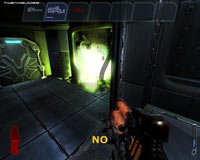
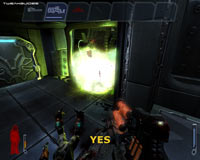
Use Shader Programs: This option determines whether you can use additional shader-based effects in Prey. Shader effects rely on your graphics card hardware to increase the realism of the environment and add special effects in certain circumstances. For example in the screenshot comparison above you can see that with Use Shader Programs set to Yes, there is a distortion effect visible around the crawler grenade explosion. When set to No, there is no such distortion. See Shader Detail below for another comparison. Note that setting this option to No disables the Shader Detail options as well, and while disabling shader programs can boost FPS, this is primarily best disabled only for older graphics cards. Fortunately even with Shader Programs disabled the difference in image quality is not significant - again, see the animated comparison below for further indication of its impact.
Shader Detail: If Use Shader Programs (see above) is set to Yes, you can determine the level of shader effects here, with the available options here being Low, Medium, High and Highest. To see the image quality difference between them check this animated screenshot comparison: Prey_Shaders.gif (969KB). Look closely at the wall to the left, and note that the most significant difference appears at the transition between High and Medium, whereby the details on the wall change to less fine/less realistic wrinkling. Note further that lowering the shader detail level all the way to Low does not result in removal of the distortion effect visible near explosions - only setting Use Shader Programs to Off will do that. In general the difference is not large but unless you have an older graphics card, or are struggling for FPS, I suggest leaving this at High or above.
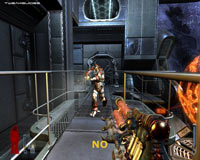

Enable Shadows: This setting determines whether you see any real-time shadows cast for objects in the game. If set to Yes you will see most objects casting very realistic shadows, which move with dynamic sources of lighting (such as swinging lamps), however your FPS will be lower as your system has to do more calculations to determine where shadows are cast at any point in time. This is particularly noticeable when there are multiple characters/enemies on the screen, as they cast very complex shadows. If set to No, these shadows will disappear, as shown in the screenshot comparison above - note in particular all the railing and character shadows are gone. However disabling shadows doesn't mean all the areas of darkness in the game will be removed; some are static shadows. Disabling shadows will improve your performance, but the atmosphere of the game may suffer quite a bit. If you feel comfortable turning this option off, then the performance improvement (which is significant on older systems) may be worth it.
Note that your own cigarette lighter doesn't seem to cast any additional objects or character shadows, however having your lighter on can still reduce graphics performance as it adds another layer of effects to the scene. Further note that you can enable your own player's shadow for added realism by using the g_showPlayerShadow command (See Advanced Tweaking section).
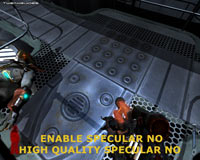
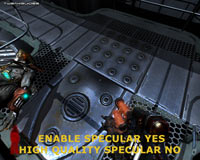
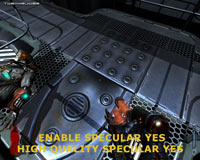
Enable Specular: If set to Yes, specular lighting gives the surfaces of objects, ranging from metals to skin, a realistic sheen. When combined with Bump Maps (see below), this option creates some very realistic surfaces in Prey, and for this reason I recommend setting it to Yes for most people. However obviously it can reduce performance, so if you're after more FPS and don't mind the drop in realism, set this option to No. See the screenshot comparison above, where the difference between enabling and disabling specular is quite obvious. Note also that the High Quality Specular option also has an impact on surface appearance - see further below for details of this setting, but I have included its effects in the screenshots above for comparitive purposes.
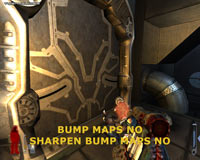
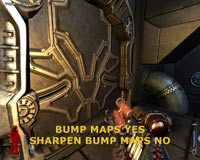

Enable Bump Maps: Bump mapping is an effect which makes 2D textured surfaces appear as though they are 3D, with depth and grain. If set to Yes, surfaces will appear much more realistic, especially when light shines on them, however your performance will be lower. Again, if you need the extra FPS then turn it off, but in general disabling this can greatly impact on realism. The screenshot comparison above shows that with bump mapping disabled, surfaces appear much less 3D. Note that the impact of the Sharpen Bumpmaps setting is also shown (See below for the setting description).
Vertical Sync: Vertical Sync (or simply VSync) is the synchronization of your graphics card and monitor's abilities to redraw the screen a number of times each second (measured in Hz). If VSync is disabled (set to No), you may see some image 'tearing' as your monitor and graphics card go slightly out of synchronization at certain times. This does no damage, it just may be annoying to see. Of course it is always recommended that you have as high a refresh rate as possible for your particular monitor (using tools like Refresh Force), but it is also recommended that you disable VSync to increase performance. Enabling VSync can result in better visual quality (i.e. no tearing), but it will also reduce average FPS, often by up to 50%. For that reason, I recommend disabling VSync. For more details see my Gamer's Graphics & Display Settings Guide.
Prey and Screen Tearing: There is something important to understand when talking about VSync and Prey though: the Doom 3 engine on which Prey is based is specifically capped at 60FPS, so you cannot exceed this framerate regardless of your VSync setting. You can still have a refresh rate higher than 60Hz, but your FPS will remain capped at 60FPS max even with VSync off. Some people have noticed the excessive level of tearing visible in the starting sequence of Prey and at certain points in the game, whether on an LCD or CRT monitor. Tearing was a problem in the original Doom 3, and is now even more apparent in Prey because many modern systems now easily push the 60FPS hard cap of the Doom 3 engine. To demonstrate what I mean, by using the com_fixedtic 1 command, we can temporarily remove the 60FPS cap on Prey (See com_fixedtic under the Advanced Tweaking section and note this also throws the game physics and audio out of sync so is not recommended for general gameplay). In doing so, a typical wall scene in the starting bathroom where Tommy turns around now shows its true potential framerate (111FPS shown in the top right corner):

This means that although restricted to a total of 60 frames per second in the Doom 3 engine, my graphics card is normally able to render twice that much in the same time (or 60 frames in half the time), so with VSync disabled, the graphics card is free to race ahead and the results are that the monitor and graphics card will be well out of sync and produce visible tearing - lots of partial frames which are slightly out of alignment. To reduce tearing without enabling VSync (which can give a severe FPS hit), I recommend increasing your graphics settings such that your FPS falls between 30 and just under 60FPS on average, i.e. smooth but not constantly pushing the 60FPS ceiling. By making your graphics card work harder, your monitor and graphics card will be closer in Sync in most areas and hence you will see less visible tearing and also enjoy better visual quality, as opposed to enabling VSync and greatly reducing your FPS to around 30FPS with lower graphics settings. If you still want to enable VSync, then also enable Triple Buffering in your graphics card's control panel to reduce the performance hit, but see the top of the Conclusion page of this guide for more details.
Antialiasing: Antialiasing is a method of smoothing the jaggedness of lines in 3D graphics. For more details see my Gamer's Graphics & Display Settings Guide. This setting has three options: Off, 2x and 4x. When set to Off, there is no additional Antialiasing used, unless you have forced Antialiasing enabled in your Graphics card's control panel. Antialiasing set to Off provides the fastest performance. When set to 2x Antialiasing, this uses your graphics card to smooth out jagged lines at the cost of some FPS. Antialiasing 4x smooths out jagged lines even more but also reduces FPS further. Note that if you have any level of Antialiasing enabled in your graphics card control panel, they will override these settings. If you want to use Antialiasing in Prey I recommend selecting 'Application Preference' in your graphics card's control panel and then setting the AA level in-game here. If you have an older system I recommend setting Antialiasing to Off to start with since it can be a major performance drain.
High Quality Specular: This option improves the appearance of the specular effect - see Enable Specular above for details and the screenshot comparison. In general it is recommended that if you enable specular, that you enable this also, otherwise the effect can be quite pixellated. However specular effects can be particularly draining on older graphics card, so in such cases I suggest turning this off (along with specular altogether if required).
Sharpen Bumpmaps: This option improves the appearance of bump map effects - see Enable Bump Maps above for details and the screenshot comparison. Once again, I recommend enabling this if you're going to use bump maps, as it really enhances the bump mapping effect. But of course for older systems or those in need of FPS, turn this off for an FPS boost.
Once you're done with these options click 'Apply Changes' to implement them, and move on to the next set of Advanced options covered on the next page.

[Advanced 2]

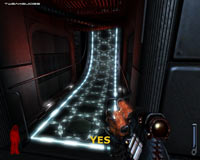
Use Glow: This option, as the name suggests, controls the glow effect surrounding various objects in the game. See the screenshot comparison above to see a clear example - when glow effects are turned off, the lit walkways and even your own gun are much less bright. Enabling this option can have an impact on FPS, but it is also forms part of the atmosphere of much of the alien ship, so only turn it off if you really need the FPS.
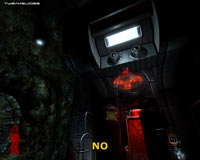

High Particle Detail: This option controls the quality of particle effects in the game. Particle effects are what give a feeling of richness and general atmosphere, and control the volume of things like smoke and fog for example. To see what I mean, look at the screenshot comparison above - with High Particle Detail set to On, the lights have a more realistic effect and interact with the air around them, giving the impression that the air is rich and humid, which is what the inside of the ship is meant to be. With the effect disabled, while FPS improves, sometimes significantly on older systems, realism is also reduced. This is most noticeable in areas which usually have smoke or steam.
High Quality Skinning: After taking many screenshots with High Quality Skinning set to Off and On, I could not for the life of me see the difference. In theory I believe it is supposed to affect the quality of certain textures like gun models, but close examination of screenshots shows me absolutely no difference either way, so if you know what exactly this setting does, please contact me.
Image Anisotropy: This setting controls the level of Anisotropic Filtering used in the game. The higher the rate of Anistropic Filtering, the crisper textures will appear as they recede into the distance. For more details see my Gamer's Graphics & Display Settings Guide. This setting has options from Off all the way up to 16x depending on your graphics card. The higher the rate of Anistropy, the better the image quality but the lower your performance. In general Anisotropic Filtering has a noticeable but not significant impact, and most systems should be able to run some level of Image Anisotropy, but if you want maximum framerates, set this to Off. Note that you should set the Anisotropic Filtering to 'application preference' in your graphics card's control panel so it doesn't conflict with this setting.
Audio
[Audio Settings]
Effect, Music Volume: These sliders controls the volume for sound affects and music respectively. Adjust each according to your tastes as they have no performance impact.
Level Load Music: If set to Yes, during periods when a new level is loading, background music/sound effects will be played. If you find these annoying and prefer to sit in silence as a new level loads up, set this option to No. There is no performance impact as such.
Sound System: This setting lets you choose the audio API (application programming interface) for playing back all sound in Prey. The Default setting will work on all systems, but the OpenAL system can provide better performance and audio quality. Before setting this option to OpenAL, first you must make absolutely certain you have downloaded and installed the latest audio drivers for your sound device. See the TweakGuides Tweaking Companion for details on how to find out more about your system hardware and how to update its drivers. Next, to find out if your sound device provides full support for OpenAL, go to your \Windows\System32 directory and look for the presence of an OpenAL32.dll file. If the file is there, you should enable OpenAL mode here, and you should experience excellent audio and minimal performance loss. If this file is not present, you can still enable OpenAL mode, however if you experience any problems, set this back to Default.
Note that SoundBlaster X-Fi owners who want to use OpenAL mode (recommended) should update to the latest Official X-Fi Drivers with OpenAL support. These drivers have a specific fix for issues with Prey in them.
[Mixer Settings]
What appears here will differ depending on which Sound System option you've enabled above.
Sound Device: If you are using the OpenAL Sound System, you can select your audio device here. Usually if you have a specific sound card, it will be listed here for you to select. If the device isn't listed first make sure you've installed the latest drivers for the sound device. If it still fails to list, select the 'Generic Hardware' option.
EAX Advanced HD: This option only appears if you're using the OpenAL sound system with a sound device which supports EAX Advanced HD. Most recent Creative Audigy and X-Fi sound cards support Advanced HD. This audio standard adds a range of special effects to audio if enabled, at the cost of a slight reduction in performance. You must also have installed the latest Advanced HD drivers for your card which can be downloaded here - see further above for X-Fi card owners.
Speaker Setup: This option appears if you are using the Default Sound System. You can only choose between Stereo and Surround Speaker Setup here - choose the one which suits your actual speaker setup, and make sure that this is also matched in your speaker choice in Windows (under Control Panel>Sounds and Audio Devices>Speaker Settings>Advanced). Note that selecting Surround mode can reduce performance slightly due to extra processing requirements, and may also cause some audio glitching on certain systems.
Reverse Channels: This option only appears if using the Default Sound System. If set to Yes, your left and right channel speaker output will be swapped. This is not something most people would want, so only enable this if your speakers are actually physically reversed (i.e. if your left speaker is sitting on your right and vice versa).
Once you're done adusting all the settings, you can go back to the main menu. Note that certain changes may require you to close and restart Prey before they come into effect, so I recommend doing so to make sure they are implemented properly and to prevent crashes/lockups. Also see the Advanced Tweaking section for details of how to further customize/troubleshoot sound-related issues in Prey.
The next section looks at advanced tweaking for Prey.

Prey is based on the highly advanced Doom 3 engine. Therefore it has a very solid and reliable engine with plenty of tweaking potential. The last section was all about how to change the easily-accessible in-game settings; this section is all about getting into advanced tweaking. Note that much of this section is derived from the Advanced Tweaking sections of my Doom 3 Tweak Guide and Quake 4 Tweak Guide, since most of the commands are exactly the same in Prey. However I have removed Doom 3 commands which do not work in Prey, and have added several commands which are unique to Prey.
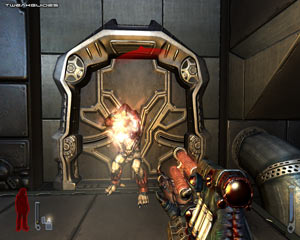
Using the Advanced Tweaks
The most common mistake made in tweaking Prey is to quickly apply a range of tweaks without knowing what exactly they do, so if you're new to tweaking the Doom 3 engine, read this section carefully and pay close attention to the descriptions of how tweaks are applied and what they do. Please do not contact me asking for additional help in applying these tweaks as I simply don't have the time to provide personal tweaking or tech support - everything you need to know to make the tweaking of Prey work is right here. If you've already done some tweaking for Doom 3/Quake 4, then the methods used are exactly the same, so you can pretty much skim through this information.
There are two main ways in which you can access and alter command variables in Prey - through the Console and through .cfg (Config) files. To save time in this guide, I detail all the major commands one by one in the next section, and you can then decide the method to use to implement particular ones. The methods are essentially interchangeable, meaning changing the variable using one method has the same impact as doing it another way - the only difference is which is more convenient for you. Once you're familiar with the various methods, see the 'Which Way is Best' section at the bottom of this page for my opinions of how best to apply tweaks.
The Prey Console
The console is the closest you can get to having direct real-time access to the Doom 3 engine powering Prey. Through the console you can enter commands to change engine variables during the game. To open the console, start Prey and then press the CTRL, ALT and ~ keys together. You will see the console come down, and you can enter text at the command prompt. A list of commands you can enter are covered in the next section. To make regular access to the console easier, enter the following line into the console:
seta com_allowconsole 1
This means that you can now open and close the console by simply pressing the '~' key (the key above TAB), and not three keys at once. Note that the best way to make this and many other settings "stick", i.e. remain enabled even after quitting and restarting Prey, you will need to insert it into a Config file, or in the game icon's Target line, both of which are covered below.
Prey Config Files
Although you can alter many variables by entering them into the console, most command variables need to be set each and every time you start Prey. This is because the game engine resets these variables to their default state as the engine initializes at startup. By default, when the game engine starts, it automatically detects the presence of, and runs the command variables from two specific files: Preyconfig.cfg and Autoexec.cfg. Preyconfig.cfg already exists in your \Program Files\Human Head Studios\Prey\base directory, and you can edit it using a text editor like Windows WordPad or Notepad. However changing some of the settings in Preyconfig.cfg will see them reset to default values again the next time you restart Prey. So the best thing to do is create a new text file, rename it to Autoexec.cfg (not Autoexec.cfg.txt) and place it in your \Program Files\Human Head Studios\Prey\base directory. You can now enter all your custom tweaks and settings into this file, and they will come into effect automatically each and every time you start Prey. This makes it easier to keep track of what you have tweaked, and if at any time you want to remove all your tweaks, you can simply delete this Autoexec.cfg file, or see which commands need to have their values manually reset to the default.
Note that there is another way of executing a config file, and that is to firstly create a config file with any name you wish, e.g. MyTweaks.cfg, place it in the \Program Files\Human Head Studios\Prey\base directory, and then in the Prey console at any time type:
exec MyTweaks.cfg
This will run all the command variables in your new .cfg file, however unless you actually execute this file it will not be automatically run at startup time - only Preyconfig.cfg and Autoexec.cfg are automatically detected and run by Prey.
Prey Icon Commands
There is one more way you can run command variables for Prey - enter them as part of the command line for the Prey icon. To do this, first right-click on the icon you use to launch Prey, and then select Properties. In the Target box, you will see something similar to this (it varies depending on where you installed the game):
"C:\Program Files\Human Head Studios\Prey\Prey.exe"
You can add command variables to the end of this line by using a space and then a '+' sign in front of each command. For example, to allow easy access to the console each time you start Prey, change the target line to the following:
"C:\Program Files\Human Head Studios\Prey\Prey.exe" +set com_allowconsole 1
Note that there are quotes around the target to the Prey.exe file, but after that, simply add a space and then a plus sign before each command. Another example is provided below with three separate commands:
"C:\Program Files\Human Head Studios\Prey.exe" +set com_allowconsole 1 +disconnect +set r_gamma 1.3
This means that every time I use this icon to launch Prey, it changes my console to one-key access using the '~' key (+set com_allowconsole 1), skips any introductory movies (+disconnect), and changes my gamma from 1.0 to 1.3 (+set r_gamma 1.3). Note the spacing - none between the plus signs and the command, but a single space between each separate command.
So Which Way Is Best?
Now you know the different ways to apply command variables in the Prey engine, as I mentioned before, there is no single 'best' way. Each method works, it just depends on what you find more convenient. I personally prefer to place all my tweaks in a single Autoexec.cfg file, because that way I can see at a glance all the settings I've changed, and if need be I can remove the file (e.g. for troubleshooting purposes), or change each setting back to default. I can also easily back up this file so I can quickly reapply the same tweaks if ever I reinstall Prey, or if my settings are lost after I patch the game.
However, I suggest that you first use the in-game console to try some commands and see what effect they have on the game, and then you can insert them into your Autoexec.cfg file once you've determined if they're worth using, and which values work best for you. Furthermore, some commands are only really useful if used in the console - for example the recorddemo command records a custom demo...not something you want to have in your Autoexec.cfg file. Also note that certain commands don't come into effect until the game is restarted (or just use the vid_restart command - see the Advanced Tweaking section), so you will have to experiment by placing those in your Autoexec.cfg first, see what they do, and then decide whether to keep them or not.
Note again that some commands require that you manually change them back to their original setting. Just removing them from your config files will not necessarily remove them. Remove them from your relevant config file, and then when you next start Prey, type just the command name in the console and see its current value. If it's not the value you want, change it in the console, or insert it with a new value in your autoexec.cfg file.
Important:, if you are going to edit Preyconfig.cfg directly, first make a backup of the file so that should something go wrong you can restore the file to its original state. Also, some people recommend that you make changes to Preyconfig.cfg and then make the file read only to prevent the game from erasing/resetting some of the changed settings. I personally don't recommend this, as Prey needs to have write access to Preyconfig.cfg file so that for example when you change one of the in-game settings or a key binding, it can record the change in that file.
The next section provides a list of all the game's most useful commands/command variables (cvars) along with descriptions.

This section lists all the major Prey commands and command variables (cvars) by general function, and provides descriptions and recommendations for the important ones. This list is by no means exhaustive, since there are literally over a thousand different commands and command variables for Prey. You can download the full list of Prey commands and cvars from here: PreyCommands.zip (20Kb) and have a look through it at your leisure.
Usage rules
Config and Console Usage: In the Prey/Doom 3 engine, when you want to use a command - whether in a config file or in the console - you can simply type the name of the command, and then any values or parameters (if required), however you must place exactly one space after the command and any following value or parameter. E.g: r_displayrefresh 85. You don't have to use "" (quotes) around the value, nor do you have to use the Set or Seta command in front of them.
Set and Seta In Front of Commands: You will see in certain places, like the Preyconfig.cfg file, that a command is prefaced with the words Set or Seta. You can also insert these in front of your commands in the console or config file, however they aren't absolutely necessary for a command to work. The Set command is used to tell the game engine to set a cvar to a particular value. Seta is more useful in that it tells Prey to set the cvar value, and then archive it (store it). Don't use Seta unless you want a value to 'stick', as it will remain there until you either manually change its value again and/or restore a previous Preyconfig.cfg backup.
Current and Default Values: If at any time you want to see the currently used value for a command variable, open the console and type the name of the variable without a value. For example, type r_displayrefresh and you will see the current value for this variable on your system, and importantly you will also see the default value. There are different defaults for many of the commands depending on your particular system hardware configuration; that's why I don't provide defaults here - they vary based on each system.
Note: if you can't remember the exact name of a command, type the first letter(s) of it in the console and then press the TAB key - the console will show you all commands beginning with the same letter(s). So for example to see all the render varilables, I can just type r_ in the console and press TAB to see them all (note you can use the mouse scroll wheel or the PgUp and PgDn keys to scroll up and down the console display).
The following is a list of all the major commands for Prey, grouped by function, and with a detailed description. Note that I have tested all of these and they should work for Prey specifically - non-working Doom 3/Quake 4 commands have been removed. However if you have any additions or alterations to make based on your own testing or knowledge, please Email Me. Note further that settings which can be easily and fully changed in the Main Menu of the game will not be covered here (e.g. ui_showgun is the same as the Show Weapon in-game setting) - see the In-Game Settings section for descriptions of those. Also some of the more obscure commands are not very useful to most users (such as a range of developer and debugging commands) and these are not included. Finally, remember that some of these commands are considered cheats, and should not/cannot be used when playing online. This includes commands which dramatically alter the appearance of the game world for example, or alter the movement or weapon characteristics.
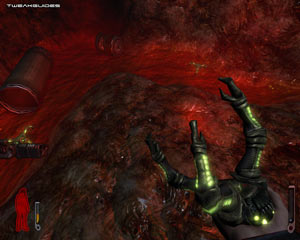
Common Commands
com_showFPS [0,1] - If set to 1, shows the current frame rate in Frames Per Second (FPS) at the top right of the screen. If set to 0, disables the counter.
com_allowConsole [0,1] - If set to 1, allows the command console to be opened by using only the '~' key, rather than CTRL + ALT + ~.
bind [keyname, command] - Binds a command to a key. For example:
bind F10 com_showFPS 1
bind F11 com_showFPS 0
Binds the F10 key to the command "com_showfps 1" (which turns on the FPS counter), and the next line binds the F11 key to the command "com_showfps 0" (which turns off the FPS counter). If you want to make a key binding 'toggle', that is pressing the same key turns a command on or off, then use the Toggle command instead, for example:
bind F10 toggle com_showFPS
Now the F10 key alone will turn the FPS counter on and off, which frees up the F11 key.
bindunbindtwo [keyname, command] - Same as bind command, however if the key you want to bind is already being used more than twice, it will unbind it first then bind it to the command you've specified.
unbind [keyname] - Unbinds any existing commands from the single key named.
unbindall - Unbinds any commands from all keys. This command is used most commonly as a starting command before setting bindings, so that you can be sure the keys you are binding are not already in use by another command.
loadGame [savename] - Loads a saved game with the name specified. If no name is specified, loadgame will load the last quicksave.
saveGame [savename] - Saves your current game under the name specified. If no name is specified, saves the game in the first quicksave spot.
editor - Opens the Prey level editor.
editFX - Opens the Prey effects editor.
modView - Opens the Prey model viewer.
echo [text] - Prints the specified text onto the screen.
exec [filename] - Executes the commands in the config filename provided. For example to execute all the commands in a custom configuration file called MyTweaks.cfg, type:
exec MyTweaks.cfg
And all the commands in it will be compiled and run.
screenshot - Takes a screenshot and places it in your \Prey\base\screenshots\ directory as a .tga file, similar to using the F12 key.
conDump [filename.txt] - Dumps the entire contents of the console for the current session to the text filename specified and places it in your \Prey\base\ directory.
clear - Clears the console of all text to date. Useful if you want to clear the console before generating specific text (e.g. listcmds) then condump them cleanly.
promptKey - Opens a dialog box which shows your current Prey CD Key and allows you to edit it or enter a new key.
developer [0,1] - If set to 1, enables Developer mode, which allows certain other console commands to work.
devmap [mapname] - Loads a map in Developer mode.
noclip - Toggles clipping on/off. By default clipping is on. When clipping is turned off, you can walk through solid objects, useful for troubleshooting or having fun.
god - Enables God mod, useful for troubleshooting or just having fun.
give - Gives you the relevant item. For example give weapon_autocannon gives you the autocannon gun. The other items you can try to give yourself are: weapon_crawler, weapon_hider, weapon_rifle, weapon_rocketlauncher, weapon_soulstripper, weapon_spiritbow and weapon_wrench. To give yourself ammo for these guns, use the give ammo command.
ai_skipthink - Freezes all artificial intelligence in the game, useful for stopping monsters.
possessPlayer - Takes the viewer to spirit mode and the player is viewed in 3rd person mode running around possessed.
kill - Kills the player.
killMonsters - Kills all monsters.
g_wicked [0,1] - If set to 1 along with g_nightmare, should enable Cherokee mode level of difficulty, but I am uncertain of this.
exit - Immediately exits Prey to the Windows Desktop.
Performance Commands
[Cache Tweaks]
The following commands control the image cache, which if enabled and set correctly can help smooth FPS and also boost performance:
com_precache [0,1] - If set to 1, attempts to load necessary resources beforehand to smooth out performance. Should always be set to 1.
image_useCache [0,1] - If set to 1, uses background loading to cache image information. This may not necessarily improve framerate performance, but it does assist in smoothing out frame rates and reducing loading pauses. Note that the image_cacheMinK (see below) size must be raised from its default otherwise the game will crash when using this setting. Once this setting is enabled, the actual cache value is set in the image_cacheMegs setting below. Note, enabling this setting can cause a crash at the 'Mother's Embrace' chapter of Prey. Set this back to 0 if you experience a crash loading up that chapter.
Update: As of the 1.1 Patch onwards, the crashing issues when using this setting have been resolved. See page 4 for details of the patch.
image_cacheMegs [Megabytes] - Determines the maximum amount of system memory to allocate to temporary loading of full-sized precompressed images if the cache is enabled by setting image_useCache to 1. Since a cache is only a temporary holding area, and not the place where the entire game is meant to reside, do not raise this value to something extremely high as that will simply reduce the available memory for the rest of Prey. Try a value of 128MB for those with 512MB of system RAM, and if you have 1GB or more of RAM, you can try a higher value like 256MB for example. Do not automatically set this to half your system RAM or some monstrous amount.
image_cacheMinK [KiloBytes] - This setting determines the minimum size in KB for precompressed image files to be loaded into the cache. To make sure most image files can be loaded, and to also prevent a system crash when enabling caching, select a value like 3072 to start with. Raising this setting may improve caching, but it may also hinder caching if most textures are below the size you specify, so don't just raise this value for the hell of it.
[Graphics Tweaks]
r_brightness [value] - Determines the overall brightness for the game. You can adjust this using the slider in the main options menu (See In-Game settings), however if you want to fine tune it you can do so here. Has no performance impact.
r_displayRefresh [Hz] - Determines the refresh rate used when Prey is launched. You should already be getting the maximum refresh rate possible on your monitor when playing Prey through the use of a refresh rate fix (See my ATI Catalyst Tweak Guide or my Nvidia Forceware Tweak Guide for a link and instructions), however if you want to set this manually, determine the supported maximum refresh rate on your monitor for the resolution you've chosen for Prey, and set this variable to that value.
r_multiSamples [0,2,4,8,16] - This setting determines the level of Antialiasing samples used. This can be set using the in-game menus (See In-Game Settings section). The numerical values here are 0 which is no antialiasing, 2, 4, 8 and 16.
image_anisotropy [1,2,4,8] - This setting determines the level of Anisotropic Filtering used in Prey, and again can be set using the in-game menus. Valid values are 1, 2, 4, and 8. Note that 1 is the lowest you can set for Anisotropic - 0 will simply default back to 1. Also note that if you have forced Anisotropic Filtering in your graphics card's control panel, it will override this setting, so for optimal performance set the Anisotropic Filtering level in your control panel to 'Application Preference', and adjust the level here.
image_filter [GL_LINEAR_MIPMAP_NEAREST, GL_LINEAR_MIPMAP_LINEAR] - Determines the OpenGL texture filtering method to use on textures by default. GL_LINEAR_MIPMAP_LINEAR is Trilinear Filtering, however if you want a performance boost without any noticeable image quality loss, change this setting to GL_LINEAR_MIPMAP_NEAREST which is Bilinear Filtering.
r_customHeight [pixels] - Sets a custom screen height in pixels. The r_mode command must be set to -1 to allow this to work.
r_customWidth [pixels] - Sets a custom screen width in pixels. The r_mode command must be set to -1 to allow this to work.
r_mode [-1,3,4,5,6,7,8] - This setting determines the resolution, as set in the in-game menus under Screen Size (See In-Game Settings section). The mode values are -1 = Custom (see r_customheight, r_customwidth commands), 3 = 640x480, 4 = 800x600, 5 = 1024x768, 6 = 1152x864, 7 =1280x1024 and 8 = 1600x1200.
com_videoRam [MB] - Shows the detected amount of video memory on your graphics card in MB. If this value is incorrect, set it to the correct value to improve performance.
cm_backFaceCull [0,1] - If set to 1, removes all polygons behind the direction the player is facing - that is, all the things the player cannot see. This can noticeably improve performance without any image quality loss, but if you experience any visual anomalies or increased loading pauses when entering new areas, set this back to 0. Note it's cm_backFaceCull, not com_backFaceCull.
com_purgeAll [0,1] - If set to 1, discards all data between level loads. Can increase loading times noticeably but may help reduce in-game pauses on systems with less System RAM/Video RAM.
com_fixedTic [0,1] - If set to 0 (the default) Prey's ticrate is capped at 60, meaning the game framerate cannot exceed 60FPS. If you want to remove this cap, set com_fixedTic to 1, but this causes the game physics to go out of sync. Note, com_fixedTic -1 is no longer supported in recent builds of the Doom 3 engine.
r_orderIndexes [0,1] - If set to 1, reorganises indexes to optimize vertex use. This improves rendering performance.
r_usePortals [0,1] - If set to 1, uses portals to perform area culling, otherwise everything is drawn. Setting this to 1 provides the best performance.
r_useOptimizedShadows [0,1] - When set to 1, uses the dmap generated static shadow volumes, which provides optimal performance.
r_lightScale [value] - All light sources are multiplied by this value. Increasing this value increases the intensity of all visible light sources. Basically it makes light sources brighter the higher the value.
r_skipDiffuse [0,1] - If set to 1, disables diffuse lighting. This improves performance, but also darkens areas where such lighting is used since no lighting is used to replace the removed diffuse lighting.
r_skipUpdates [0,1] - If set to 1, lighting is not updated, meaning all lighting will become static (fixed direction and intensity). This can improve performance significantly, but reduces realism.
r_skipDeforms [0,1] - If set to 1, any material which can be deformed will remain in its original state.
r_skipFogLights [0,1] - If set to 1, disables all fog lights which can improve performance.
r_skipTranslucent [0,1] - If set to 1, disables translucent rendering, which can improve performance (but reduce realism) in such areas.
r_skipInteractions [0,1] - If set to 1, disables all light interactions with surfaces, effectively making almost all surfaces black.
r_skipMegaTexture [0,1] - If set to 1, uses only the lowest level images. This improves performance at the cost of lower image quality for some surfaces.
r_skipGuiShaders [0,1,2,3] - If set to 1, this removes all Graphical User Interfaces (GUIs) in the game (i.e. computer terminals, security screens etc.), if set to 2, GUIs aren't drawn but they can still be interacted with, if set to 3 they will be drawn, but cannot be interacted with. These settings can improve performance but obviously reduce playability.
r_useShadowCulling [0,1] - If set to 1, tries to remove shadows from partially visible lights. This provides optimal performance.
r_useLightCulling [0,1,2,3] - Determines the light culling method. 0 is no culling, 1 is box culling, 2 is the exact clip of polyhedron faces, and 3 also includes areas. This should be set to 3 for optimal performance. Other methods can reduce visual anomalies with lighting but will reduce performance.
r_useCulling [0,1,2] - Determines the object culling method. 0 is no culling, 1 is sphere culling and 2 is sphere and box culling. Setting this to 2 provides optimal performance, but other methods can be tried to reduce visual anomalies.
r_renderer [best, arb, arb2, cg, exp, nv10, nv20, r200] - Determines the rendering path to use. Some renderers can't run on certain hardware - for example cg is an Nvidia rendering language and can't run on ATI cards. You can experiment with these to see which is best on your system, however the best option should be set for most.
r_ignoreGLErrors [0,1] - This setting should be set to 1 to ignore OpenGL errors. Most people will have one or two OpenGL errors throughout the game, and these don't seem to affect gameplay.
r_znear [value] - This setting determines the distance at which z-buffer clipping occurs. The default value is 3, and lower values can result in graphical anomalies for distant objects but improve performance, while higher values may help reduce any z-buffer graphical anomalies, but may reduce performance.
r_useInfiniteFarZ [0,1] - If set to 1, this uses the no-far-clip-plane trick which provides optimal performance.
r_useStateCaching [0,1] - This option should be set to 1 for optimal performance, as it caches OpenGL state changes.
r_useIndexBuffers [0,1] - If set to 1, uses ARB_vertex_buffer_object for indexes. This can actually reduce performance, so set to 0.
r_useVertexBuffers [0,1] - If set to 1, uses ARB_vertex_buffer_object for vertexes, which improves performance.
r_useCachedDynamicModels [0,1] - If set to 1, uses cache snapshots of dynamic models which improves performance.
r_useTwoSidedStencil [0,1] - If set to 1, optimizes the processing of stencil shadows.
r_useTurboShadow [0,1] - If set to 1, uses the infinite projection with W technique for dynamic shadows which improves performance without a noticeable drop in image quality.
r_useShadowVertexProgram [0,1] - If set to 1, does the shadow projection in the vertex program on graphics cards with this capability. If you set this to 1 and experience problems or a crash, it is because your graphics card does not support this functionality.
r_useShadowProjectedCull [0,1] - If set to 1, removes polygons which would fall completely inside shadows, optimizing performance.
r_useTripleTextureARB [0,1] - If set to 1, this allows graphics cards with 3+ texture units do a two pass instead of three pass which improves performance. Set this to 1 and if you experience problems, your graphics card does not support this function.
r_useConstantMaterials [0,1] - If set to 1, this setting uses pre-calculated material registers if possible, improving performance.
r_useNV20MonoLights [0,1] - If set to 1, this option uses optimized rendering for mono lights originally intended for Nvidia NV20 GPUs.
r_useLightPortalFlow [0,1] - If set to 1, this uses a use a more precise area reference determination for lighting. Setting this to 0 improves performance but may result in graphical anomalies.
g_projectileLights [0,1] - If set to 1, allows dynamic lights for projectiles. Setting this to 0 can improve performance in combat.
g_doubleVision [0,1] - If set to 1, shows a blurry "double vision" effect when taking damage. Setting this to 0 removes this effect and can improve performance when taking damage.
g_bloodeffects [0,1] - If set to 0, disables all blood effects and splatters.
g_gravity [x,y,z] - Sets the gravity level of X, Y and Z surfaces and the physics will react accordingly.
g_perfTest_aiNoRagdoll [0,1] - If set to 1, disables the "ragdoll" effect when monsters die, which can slightly improve performance on slower CPUs in heavy combat scenes.
g_perfTest_weaponNoFX [0,1] - If set to 1, disables all weapon effects like muzzle flash, ejecting brass, tracers etc. which can improve performance in heavy combat.
r_jitter [0,1] - If set to 1, creates a jittery effect for everything viewed. Can reduce performance.
g_muzzleFlash [0,1] - If set to 1, shows a flash from the muzzle of weapons that are firing. If set to 0, this effect is disabled, which can improve performance.
g_showHud [0,1] - If set to 1, this enables the Heads Up Display (HUD). If set to 0, this removes the HUD from view, which may give a minor performance improvement. This command is most useful for taking "clean" screenshots (i.e. without the HUD).
g_showPlayerShadow [0,1] - If set to 1, the player will cast a shadow when standing near lights. If set to 0, the player casts no shadow, which improves performance.
g_skipViewEffects [0,1] - If set to 1, removes various view-related special effects like the damage effects (double vision). This can improve performance.
g_fov [angle] - Specifies the angle for the Field of View (FOV). The wider the angle, the larger the field of vision for the player, giving a "fish eye" view in effect, however performance will be reduced. The smaller the angle, the higher the performance. The default of 90 is recommended, but players can try 85 which is a value used in some other games and will gain a slight boost in FPS.
g_skipFX [0,1] - If set to 1, disables certain special effects (I'm unclear on which). This can improve performance.
g_skipParticles [0,1] - If set to 1, disables certain particle effects (does not include smoke, dust, fog effects etc). This can improve performance, particularly in areas which use these effects to a large extent, but realism will be reduced.
image_usePrecompressedTextures [0,1] - When set to 1, all textures will be precompressed, resulting in less video memory being used and hence smoother performance on most machines. There may be some minor compression artifacts on textures, but these are hardly noticeable. If set to 0, this setting will force realtime compression on textures which results in reduced image quality and performance. Note that if this setting is set to 0 and the image_useCompression setting is also set to 0, uncompressed textures will be used for highest image quality, but performance will suffer and you will get more small pauses depending on the amount of Video RAM on your graphics card, so on balance this should be set to 1. Note that setting this option to 0 does not work in the Prey demo, it causes missing textures - it only works in the full version. Note further it can also cause crashes if set to 0, so if this is the case for you, set it back to 1.
image_useNormalCompression [0,1,2] - Specifies the compression method used for textures. 0 disables normal map compression for the highest image quality for textures, 1 is 256 color compression (if available), which gives the best performance but provides the most compression artifacts, while 2 is rxgb compression. When combined with the setting above and below, setting this to 0 provides optimal image quality for minimal performance hit. Note that setting this option to 0 does not work in the Prey demo, it causes missing textures - it only works in the full version.
image_useCompression [0,1] - When set to 1, compression is used - with the method of compression specified in the image_useNormalCompression variable. Compression provides the fastest performance by reducing the size of all textures and light maps, but there are some (minor) compression artifacts. When set to 0, precompressed textures are still used, but realtime compression is not used if image_useNormalCompression and image_usePrecompressedTexures are activated. This results in better image quality, but slower performance particularly during periods when precompressed textures are not used.
image_preload [0,1] - If set to 1, Prey attempts to preload most images in the background, meaning less loading pauses during the game but longer loading times. If set to 0, images are loaded dynamically as needed, meaning more loading pauses during the game. 1 is the recommended setting.
image_lodbias [value] - Determines the Level of Detail (LOD) bias for mipmapped images. The higher the number, the less detail is visible on surrounding objects. This can improve performance, but reduces image quality. The default is 0, and values above 1 reduce detail quite heavily, so experiment with fractional values such as 0.2 or 0.5.
[Sound Tweaks]
s_force22kHz [0,1] - If set to 1, this forces lower quality (22kHz) audio, which reduces sound quality but can improve performance.
s_numberOfSpeakers [2,4,5,6] - This value shows the actual number of speakers the game has detected, based on your general Windows settings and In-Game settings. You can manually alter this value, however make sure it matches your current speaker setup otherwise you will have missing audio channels.
s_volume_dB [? - 0] - This is the sound effects volume level for the game. You should use the in-game menu volume slider to adjust the sound, but if it is too low or too high you can also adjust it here, though note it is deciBels.
s_musicVolume_dB [? - 0] - This is the music volume level for the game. You should use the in-game menu volume slider to adjust the sound, but if it is too low or too high you can also adjust it here, though note it is deciBels.
s_maxSoundsPerShader [value] - This setting determines the maximum number of sounds to use per shader, that is how diverse the sounds effects are. Increasing this value increases sound variety but also increases memory usage and can reduce performance.
s_clipVolumes [0,1] - When set to 1, this removes sounds which cannot be heard which provides optimal performance.
s_useOcclusion [0,1] - Occlusion is a basic audio method which muffles sounds which aren't clearly heard, such as those behind walls and objects. If set to 0, this method is disabled reducing realism but it may increase performance.
s_useEAXOcclusion [0,1] - If set to 1, the EAX Occlusion effect is used, which is an improved form of occlusion. However if you want to adjust this aspect of EAX separately from EAX Reverb (see s_useEAXReverb), you can individually enable/disable it here.
s_useEAXReverb [0,1] - If set to 1, uses the EAX Reverberation effect, however it can be disabled separately here while still retaining EAX Occlusion effects (See s_useEAXOcclusion).
s_useOpenAL [0,1] - If set to 1, uses the OpenAL sound system which is recommended for most sound cards.
s_noSound [0,1] - If set to 1, disables all sounds. Useful for troubleshooting to see if crashes are due to sound-related issues for example.
[Downsizing Tweaks]
The following values control the largest size allowed (in pixels) for textures, lighting and render maps. If downsampling is not enabled, these values make no difference. However if downsampling is enabled, changing the limit values can improve performance by restricting the size of texture, light and render maps. The common values are 256 for 64MB graphics cards, 512 for 128MB graphics cards and 1024 for 256MB graphics cards. You can try lower values for your graphics card to see if loading times and in-game pauses are improved, and judge whether your image quality has fallen or not. Typically smaller sample size limits will result in more pixelated textures and less detailed lighting as textures and lightmaps are resized from their original resolutions to smaller ones.
image_downSizeLimit [pixels] - This setting controls the diffuse light map downsample limit - the largest size in pixels for the diffuse light map. Use 256 for graphics cards with 64MB of Video RAM, 512 for 128MB VRAM and 1024 for 256MB VRAM or above.
image_downSize [0,1] - If set to 1, this puts into effect the downSizeLimit value specified above. If set to 0, textures are displayed at full resolution for highest image quality but lower performance.
image_downSizeBumpLimit [pixels] - This setting controls the bump map texture downsample limit. Use 256 for graphics cards with 64MB of Video RAM, 512 for 128MB VRAM and 1024 for 256MB VRAM or above.
image_downSizeBump [0,1] - If set to 1, this puts into effect the downSizeBumpLimit value specified above. If set to 0, bump mapping on textures are displayed at full resolution for highest image quality but lower performance.
image_downSizeSpecularLimit [pixels] - This setting controls the specular lighting light map downsample limit. Use 256 for graphics cards with 64MB of Video RAM, 512 for 128MB VRAM and 1024 for 256MB VRAM or above.
image_downSizeSpecular [0,1] - If set to 1, this puts into effect the downSizeSpecularLimit value specified above. If set to 0, surface effects on textures are displayed at full resolution for highest image quality but lower performance.
The next page continues the console command listing.

Demo Commands
Note: To enable the full Demo and Benchmark commands in the Prey demo version, you will need to use the command seta fs_restrict 0 in your Autoexec.cfg file, or add +set fs_restrict 0 to the Target line of your Prey icon properties. The full version of Prey allows full Demo and Benchmark functionality by default.
recordDemo [demoname] - Records a demo of your current (singleplayer) gameplay with the name specified. The demo is placed in your \Prey\base\demos\ directory by default. This directory doesn't exist by default and is created the first time you record a demo.
stopRecording - Stops recording the current demo.
playDemo [demoname] - Plays back a singleplayer demo with the name specified.
recordNetDemo [demoname] - Records a demo of your current gameplay on a multiplayer server only and saves it to your demo directory, similar to the recordDemo command.
stopNetDemo - Stops recording the current multiplayer demo.
playNetDemo [demoname] - Plays back a multiplayer demo with the name specified.
com_preloadDemos [0,1]- Preloads all demos before playing them. Set to 0 will reduce memory usage, but loading demos will take longer.
com_compressDemos [0,1] - If set to 1 will compress demo files recorded, reducing their size. These files may take longer to load.
demoShot [demoname] - Creates a screenshot for the demo file specified.
avidemo [demoname] - Creates an AVI from an existing demo.
avigame Creates an AVI from your current gameplay.
com_aviDemoHeight [pixels] - Determines the resolution height in pixels for AVI demos generated through the avidemo command. The greater the size, the larger the resulting file.
com_aviDemoWidth [pixels] - Determines the resolution width in pixels for AVI demos generated through the avidemo command. The greater the size, the larger the resulting file.
com_aviDemoSamples [samplerate]- Determines the sample rate for AVI demos generated through the avidemo command. The higher the rate, the larger the resulting file will be, but the smoother it will play.
Benchmarking Commands
timeDemo [demoname] - Runs a timedemo on the demo name provided. As no default demos exist in Prey, you will first have to create a custom demo.
timeDemoQuit [demoname] - Runs a timedemo, and then exits the game completely when done.
playNetTimeDemo [demoname] - Runs a timedemo using a demo recorded in multiplayer using the recordNetDemo command.
benchmark - Runs a benchmarking procedure which uses progressively less pixels (screen size shrinks) and then goes through a variety of effects until a result is provided at the end in the console.
Control/Movement Commands
sensitivity [value] - This value represents your mouse sensitivity, as set by the slider in the in-game menus (See In-Game Settings). Raising the value increases the mouse's sensitivity to movements in the game.
m_accel [value] - This value sets the rate of mouse acceleration for Prey. The higher the value the larger your mouse movements will be as you keep moving the mouse in a particular direction.
The variables below control the slight bobbing movements your player has when moving around, such as when he is running (runroll, runpitch, runbob), walking (walkbob, bobroll, bobpitch, bobup) and crouching (crouchbob). These bobbing, pitching and rolling movements are all quite realistic, but may be annoying to some people. Raising the values increases the bobbing and pitching, while reducing the values lessens the intensity of these movements. Note, bobbing will still occur in multiplayer unless the server admin has allowed bob to be altered.
pm_bobroll [value]
pm_bobpitch [value]
pm_bobup [value]
pm_runroll [value]
pm_runpitch [value]
pm_runbob [value]
pm_walkbob [value]
pm_crouchbob [value]
pm_crouchrate [seconds] - This setting controls the time it takes for the player to switch from standing to crouching. The higher the setting, the longer it takes.
pm_normalviewheight [value] - Determines the height of the player's view when standing.
pm_crouchviewheight [value] - Determines the height of the player's view when crouching.
pm_staminarate [value] - Determines the rate at which the player regains Stamina points. Divide the pm_stamina value by this rate to calculate how long it takes for the player to fully regain all his stamina.
pm_staminathreshold [value] - When stamina falls below this value, the player slows to a walk.
pm_stamina [value] - Determines the length of time a player can run.
pm_speed [value] - This setting determines how fast a player can run. Higher values result in a faster speed.
pm_walkspeed [value] - This setting determines how fast a play can walk. Higher values result in a faster walking speed.
pm_crouchspeed [value] - This setting determines how fast a player can move while crouching. The higher the value, the faster a crouching player can move.
pm_stepsize [value] - This is the maximum height over which a player can step without having to jump. Lower values may result in players not being able to climb stairs without jumping for example.
pm_jumpheight [value] - This setting is the approximate height a player can jump. Higher values will result in a higher jump height.
View Commands
pm_thirdPersonDeath [0,1] - If set to 1, enables third person view when the player dies.
pm_thirdPerson [0,1] - If set to 1, shows the player in third person view.
pm_thirdPersonAngle [angle] - If third person view is being used (i.e. pm_thirdPerson is set to 1), this determines the angle of the third person view. 0 is behind the player, while 180 is looking directly at the player's face. Other values view the player from various angles.
pm_thirdPersonHeight [value] - If using third person view, this determines the height of the camera from normal view height. Positive values raise the camera above normal view height, negative values below normal view height.
pm_thirdPersonRange [value] - If using third person view, determines the distance of the camera from the player. 80 is the default, and 0 is right inside the players head.
pm_maxviewpitch [angle] - This setting determines the maximum angle a player can look down. Higher positive values will result in the player overshooting his own feet. Negative angles will result in the player looking up when attempting to view downwards.
pm_minviewpitch [angle] - This setting determines the maximum angle a player can look up. Higher negative values will allow the player to look up and over the back of their own head. Positive values will result in the player looking downward when attempting to look up.
Information/Diagnostic Commands
com_showMemoryUsage [0,1] - If set to 1, shows the amount of memory allocated to the game and various assets.
com_memoryMarker [Megabytes] - This marker shows the approximate amount of memory (in MB) used by Prey in its last run.
game_memory - Displays the amount of game memory allocated, and to how many objects.
showTriSurfMemory - Shows the amount of memory used for polygon surfaces.
com_showSoundDecoders [0,1] - If set to 1, shows all the currently loaded sounds, how large they are and how far through playback (in %) they are.
g_showPVS [0,1] - If set to 1, shows a wireframe border around all portals such as doors and passageways.
r_showSurfaceInfo [0,1] - If set to 1, shows the surface material name when a cursor is pointed at a surface.
r_showTris [0,1] - Enables wireframe mode. If set to 1, shows all visible geometry in wireframe. If set to 2, it only draws front-facing geometry in wireframe. If set to 3, shows all geometry (visible or not) in wireframe. Interesting to see how many polygons are being used for certain effects, like smoke and steam.
r_showLightCount [0,1,2,3] - If set to 1, colors each surface based on the light count, if set to 2 also counts everything through walls, and if set to 3 also prints overdraw.
r_showShadowCount [0,1,2,3,4] - If set to 1, colors the screen based on shadow volume depth complexity, if set to 2 prints overdraw count based on stencil index values, if set to 3 only shows turboshadows, and if set to 4 only shows static shadows.
r_showSilhouette [0,1] - If set to 1, highlights every edge which casts a shadow.
gfxInfo - Displays a dump of graphics information, including graphics card model, driver version, supported paths etc.
listSounds - Lists all sounds currently loaded and the amount of memory they are using.
listImages - Lists all images currently loaded and the amount of memory they are using.
listBinds - Lists all currently bound keys and commands to which they are bound.
listCvars [-help] - Lists all Prey cvars, and if the -help switch is used, help text is also provided.
listCmds - Lists all Prey commands.
Reload Commands
The following commands all reload particular aspects of the game, such as sounds, images, decals and Graphical User Interfaces (GUIs). Using these commands at any point can help resolve any graphical anomalies or glitches you are experiencing with these particular aspects of the game by reloading them from scratch without having to quit and re-enter the game. Note, some aspects take a while to reload (e.g. reloadImages and reloadEngine can take quite a while), so be careful if using such commands in an online game.
reloadEngine
reloadSounds
reloadModels
reloadImages
reloadSurface
regenerateWorld
reloadGuis
reloadDecls
cvar_restart
s_restart
vid_restart
Multiplayer Commands
The following are useful multiplayer commands which can be used by clients (players on servers).
connect [servername] - Connects to a multiplayer server with the given name
disconnect - Closes the current game map. Also used for skipping the introductory movie by appending +disconnect to the Prey icon Target box (See Conclusion section).
reconnect - Reconnects to the last server connected to successfully.
ui_name [string] - This is your character name as set in the in-game menus. The only reason you may want to edit it using this command rather than the in-game menus is if you want to insert special characters in your name, or use color codes in front of letters. The color codes are ^1 Red ^2 Green ^3 Yellow ^4 Blue ^5 Aqua ^6 Purple ^7 White ^8 Grey ^9 Black. E.g. ^3Persian^1Immortal provides the text PersianImmortal when your name is displayed in multiplayer games.
say [text] - Says the provided text in Global Chat in multiplayer.
sayTeam [text] - Says the provided text in Team Chat in multiplayer.
serverInfo - Shows information about the current server when in multiplayer.
net_clientMaxRate [Bytes] - This setting controls the maximum amount of data in bytes per second you can receive from a server every second. By default, most servers only provide 16000 bytes per second at most (as set in their net_serverMaxClientRate setting), but you can try first lowering this value to see if it reduces and stabilizes your ping when playing Prey online. Try values such as 10000 or 12000. Note that just as values which are too high can cause problems, so too can values which are too low - Prey multiplayer is not really designed for dialup speeds (i.e. values of 6000 or less). You can try high values up to 25,000 if you have an extremely fast connection and/or are playing at a LAN.
net_clientLagOMeter [0,1] - If set to 1, a small graphical display is shown at the bottom left of the screen only during multiplayer games. It looks like a set of green, yellow and red blocks, and tells you various things about your connection. In essence however the main thing is for you to note whether it is predominantly green, or if there are lots of yellow and/or red blocks. Yellow and red indicate connection problems. If you switch to another server and these go away, then the problem is likely with the server and/or you may be quite far away from the server. If it happens on all servers however the problem is likely at your end.
net_clientPrediction [milliseconds] - Determines the number of additional milliseconds by which the client (your machine) will try to predict and offset any ping lag. The default is 10ms, but if you're experiencing connection problems and lag and/or a high ping, raising this value may improve things. Remember however that your ping is the round-trip time to a server (e.g. a 250 ping means 125ms taken for your data to get to a server, 125ms for it to get back). So your ping divided by 2 will give you the best prediction value, and usually only if your ping is higher than 150ms.
That's the current list of the more useful Prey command variables which I know. I need knowledgeable readers to send me better descriptions for any of the above commands which are not completely clear, and also any important additions you feel need to be made. So please, if you genuinely know what something does (no guesses please), Email Me. This section can then serve as a central resource for Prey players to refer to for command tweaking.
The next section has a few neat tips and tweaks and wraps up the entire guide.

That brings this guide almost to its conclusion. Below is some more information which you might find useful, along with my concluding thoughts.
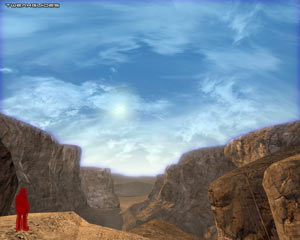
Mouse Lag & Max Frames to Render Ahead
This setting has gained such prominence in Oblivion (See page 13 of my Oblivion Tweak Guide), that I thought I would mention specifically here that it has no impact on Prey. This is because Prey is an OpenGL-based game, and the Max Frames to Render Ahead setting is a Direct3D-only setting. So please do not bother to alter this setting in the hopes of any change in Prey.
However if you are experiencing mouse or control lag in Prey, there are several things you can do. Firstly, you can disable Vertical Sync (VSync) - as covered in the In-Game Settings section of this guide. If you have VSync enabled and you have also enabled Triple Buffering in your graphics card's control panel to improve performance, but are experiencing mouse/control lag, then disable it - for more details see my Gamer's Graphics & Display Settings Guide. Finally, you must make sure that your framerate remains above around 18-20FPS, as below this almost any game feels laggy and slow to respond - this 'lag' is normal when your framerate is very low, so lower your settings to improve your average framerate.
Prey and Dual Core CPUs
Using my X2 4400+ dual core CPU, I have checked to see if Prey is multithreaded and it appears not to be. This is not an engine limitation, as the Doom 3 engine has a specific variable to enable symmetric multiprocessing (multithreading) currently used by Quake 4, called r_useSMP. This variable is not available in Prey, and while running Prey I have checked my Task Manager CPU usage stat and it always stays at or just below 50%, meaning only one of the two cores is working with Prey. Hopefully a future patch will enable multiprocessor support for Prey, but to be honest the performance of the game is already quite good without it.
Note that AMD dual core users should install the AMD Dual Core Optimizer to ensure there are no problems with Prey or any other game on a dual core CPU, such as strange hitching and skipping.
Prey SLI Profile
There is no profile for Prey in the latest Official Nvidia drivers, however the new Beta 91.33 Forceware drivers do contain an SLI profile for Prey, and I recommend you use these if you run an SLI setup. If you wish to stick to your existing Forceware version, you can simply copy the Quake4 SLI profile and use it for Prey as it is almost identical in all respects.
Update: As of the 91.47 Official Forceware drivers there is a Prey profile built in. Make sure to use the latest official Nvidia drivers.
Prey Music
If you like the Prey music playing during the main menu, it's called Prey Overture and you can extract it quite simply by going to your \Prey\base\ directory, and opening the pak003.pk4 file using a utility like WinZip. Inside the archive, look for the file prey_overture.ogg and extract it. You can now play this file using a media player which can play .ogg files like the free WinAmp.
I personally think it's a great tune, so give it a try - the full version is quite good and runs over 5 minutes.
Update: The track played at the end of the game is called takemehome.ogg and can also be found in pak003.pk4.
Disable Startup/Menu Movies
If you want to skip the introductory movies each time Prey loads, there is a simple method for doing this. Go to the icon you use for launching Prey, right-click on it and select Properties. In the Properties box which opens, find the Target line and add a space then "+disconnect" (without quotes) to the end of it. For example:
"C:\Program Files\Prey Demo\Prey.exe" +disconnect
Now when you launch the game with this icon, the intro movies are skipped every time.
Prey Benchmarking
The Doom 3 engine on which Prey is based is a highly advanced OpenGL-based game engine. Prey in particular adds some nice graphical effects to the ageing but still excellent Doom 3 engine. As such, it's a great tool for benchmarking your system for OpenGL performance. To record your own custom demo, load up a particularly challenging stretch of the game, then open the console and type "recorddemo demoname" (without quotes). For example: recorddemo trialrun will start recording a demo called trailrun.demo in your \Prey\base\demos\ directory. Type "stoprecording" (without quotes) to stop recording this demo at any time. To run your custom demo (or any custom demo), go to your in-game console (See Advanced Tweaking section for details) and type "timedemo demoname" (without quotes) in the console. Wait for the run to finish and note the results, then you can compare them with others online for example.
If instead you don't want to go to the trouble of doing all of the above, you can instead use the HOCBench Prey Benchmark program.
Taking Screenshots
Taking screenshots in Prey is quite easy - simply press the PRINTSCREEN key which is bound by default to the screenshot function in the game - although you can change this in the Controls in-game settings. Using the screenshot key you can take a screenshot during gameplay and it will be placed in your \Prey\base\screenshots\ directory. However this screenshot is quite large and in .tga format. You can open it using Photoshop, or a free application like IrfanView.
The only other readily available method of taking screenshots in Prey is to use a free utility like Fraps. Fraps can take as many screenshots as you like during gameplay, and stores them in the directory of your choice.
Conclusion
This brings the Prey Tweak Guide to a conclusion. The guide originally came out for the demo version of the game back in June, and has now been updated for the full version, although it is important to note that there aren't any major differences between the two versions. I would appreciate constructive feedback on this guide, including anything important you think has been inaccurately described or omitted, so please Email Me. However keep in mind that I can't offer any tech/tweak support.
In the meanwhile, I hope you've found this guide useful, and of course check back regularly as I keep the guide up to date for this great game.
Until next time, take care!

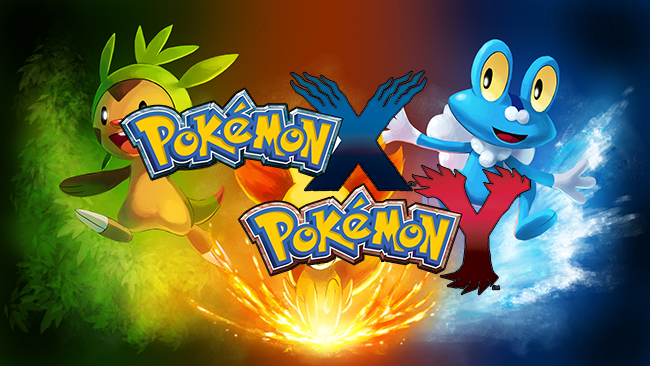


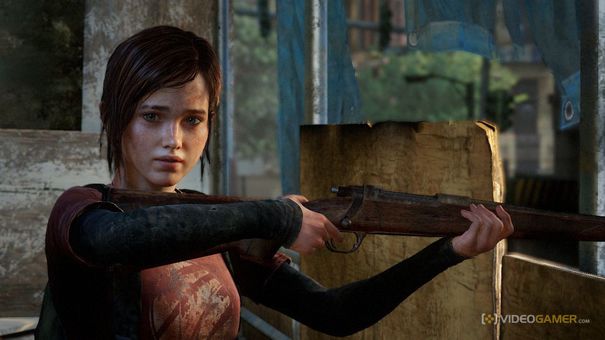
 Cliffwalker Elder Scrolls Mod Examination, Nehrim: At Fate's Edge
Cliffwalker Elder Scrolls Mod Examination, Nehrim: At Fate's Edge How to configure Fraps settings to create game trailers
How to configure Fraps settings to create game trailers Battlefield 2 Tweak Guide
Battlefield 2 Tweak Guide Witcher 3: The Wild Hunt Download Now!
Witcher 3: The Wild Hunt Download Now!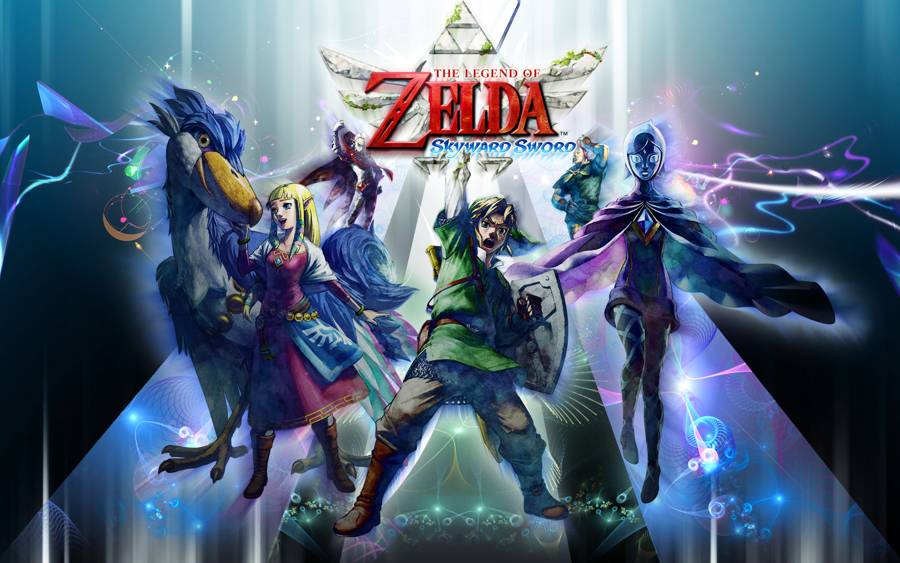 The Legend Of Zelda Skyward Sword Lava Bridge Walkthrough
The Legend Of Zelda Skyward Sword Lava Bridge Walkthrough